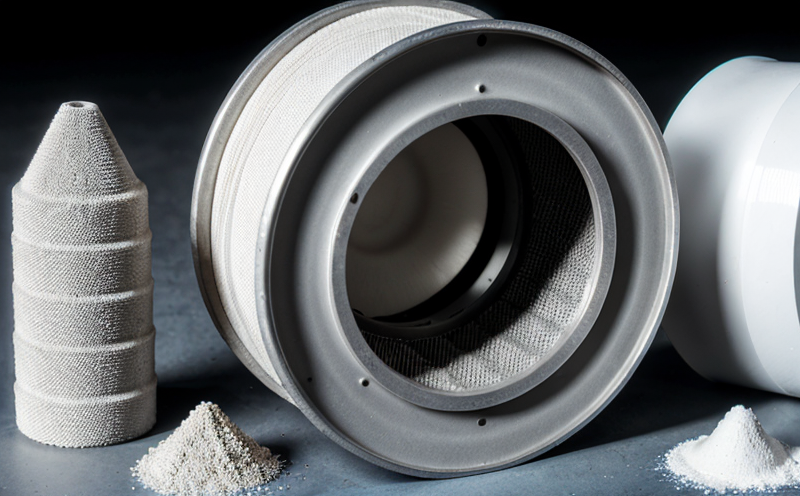ASTM D543 Chemical Resistance Compliance Testing
The ASTM D543 standard provides a method to evaluate the chemical resistance of plastic materials. This compliance testing is essential in ensuring that materials used for marine and ship equipment meet stringent performance criteria, particularly when exposed to harsh maritime environments.
Marine and ship equipment often operates under extreme conditions, including exposure to seawater, chemicals, and abrasive particles. The integrity of the materials used is critical to ensure longevity and reliability. ASTM D543 testing helps manufacturers and suppliers confirm that their products will withstand these environmental stresses without degradation or failure.
The test involves submerging specimens in a solution of 10% sodium chloride (NaCl) and 2% acetic acid for specific periods, depending on the material's intended application. The specimens are then evaluated for any changes in color, appearance, or physical properties. Compliance with ASTM D543 ensures that materials meet the necessary durability requirements.
For additive manufacturing materials specifically used in marine equipment, this compliance testing is crucial as these materials undergo multiple processing steps and must retain their integrity throughout the lifecycle of the product. The test helps ensure that the final products are robust enough to withstand the rigors of maritime operations without compromising safety or performance.
The ASTM D543 standard provides a clear, standardized approach to evaluating chemical resistance. This ensures consistency across different manufacturers and suppliers, allowing for easier quality assurance and compliance verification. Compliance with this test is often required by regulatory bodies and industry standards, making it an essential step in the development and production of marine equipment.
Understanding the specific requirements and processes involved in ASTM D543 testing can help ensure that materials meet or exceed expectations. This knowledge is crucial for quality managers and compliance officers who need to verify that their products are up to industry standards. R&D engineers and procurement professionals will also benefit from this insight, as it informs material selection and ensures product reliability.
The ASTM D543 test involves a series of steps designed to simulate the real-world conditions faced by materials in marine environments. These steps include:
- Preparation of specimens according to ISO 15227
- Submersion of specimens in a solution of 10% NaCl and 2% acetic acid for up to 96 hours, depending on the material type
- Evaluation of changes in color, appearance, or physical properties
- Documentation and reporting of results
The test is critical for ensuring that additive manufacturing materials used in marine equipment can withstand harsh conditions without degradation. This compliance testing helps maintain product integrity and reliability, which are paramount in the maritime industry.
Industry Applications
| Industry Segment | Application |
|---|---|
| Marine Engineering | Evaluation of materials used in ship hulls and coatings to ensure durability against saltwater. |
| Shipbuilding | Testing of structural components exposed to harsh environmental conditions. |
| Oceanographic Research | Assessment of equipment used for deep-sea exploration, ensuring resistance to pressure and corrosive substances. |
| Evaluation of materials in offshore platforms and pipelines to ensure they can withstand saltwater and other chemicals. |
The ASTM D543 test is widely used across various sectors within the maritime industry. Its primary application lies in ensuring that materials used in critical components, such as hulls, coatings, and structural elements, remain intact under harsh environmental conditions. This compliance testing is essential for maintaining product integrity and reliability.
Customer Impact and Satisfaction
The ASTM D543 Chemical Resistance Compliance Testing service directly impacts customer satisfaction by ensuring that products meet or exceed industry standards. By adhering to this test, manufacturers can provide materials that are reliable and durable, which is crucial for the maritime sector where equipment must perform reliably under extreme conditions.
Customers benefit from this compliance testing in several ways:
Enhanced product performance: Ensures that materials used in marine equipment remain robust throughout their lifecycle.
Increased confidence in purchasing decisions: Compliance with ASTM D543 provides a clear indication of the quality and reliability of the products.
Regulatory compliance: Meeting this test is often required by regulatory bodies, ensuring that customers are buying products that meet industry standards.
The service also enhances customer satisfaction through:
Reduction in warranty claims: Products that pass ASTM D543 testing are less likely to fail due to chemical exposure, reducing the need for replacements and repairs.
Improved reputation: Demonstrating compliance with this test can enhance a company's reputation as a leader in product quality.
In summary, ASTM D543 Chemical Resistance Compliance Testing plays a vital role in enhancing customer satisfaction by ensuring that products meet or exceed industry standards and perform reliably under harsh conditions.
Use Cases and Application Examples
The ASTM D543 test is widely used across various sectors within the maritime industry. Here are some specific examples of how this testing applies to different components:
Ship hulls: Ensuring that the materials used in ship hulls can withstand saltwater and other corrosive substances.
Hull coatings: Evaluating the durability of coatings applied to the exterior of ships, which are exposed to harsh environmental conditions.
Structural components: Testing the integrity of structural elements used in ship construction, ensuring they can withstand extreme pressures and chemicals.
Pipelines and platforms: Assessing materials used in offshore oil & gas operations, ensuring they can withstand saltwater and other chemical exposures.
These use cases highlight the importance of ASTM D543 testing in maintaining product integrity and reliability. By adhering to this test, manufacturers can provide products that are robust enough to perform reliably under extreme conditions.





